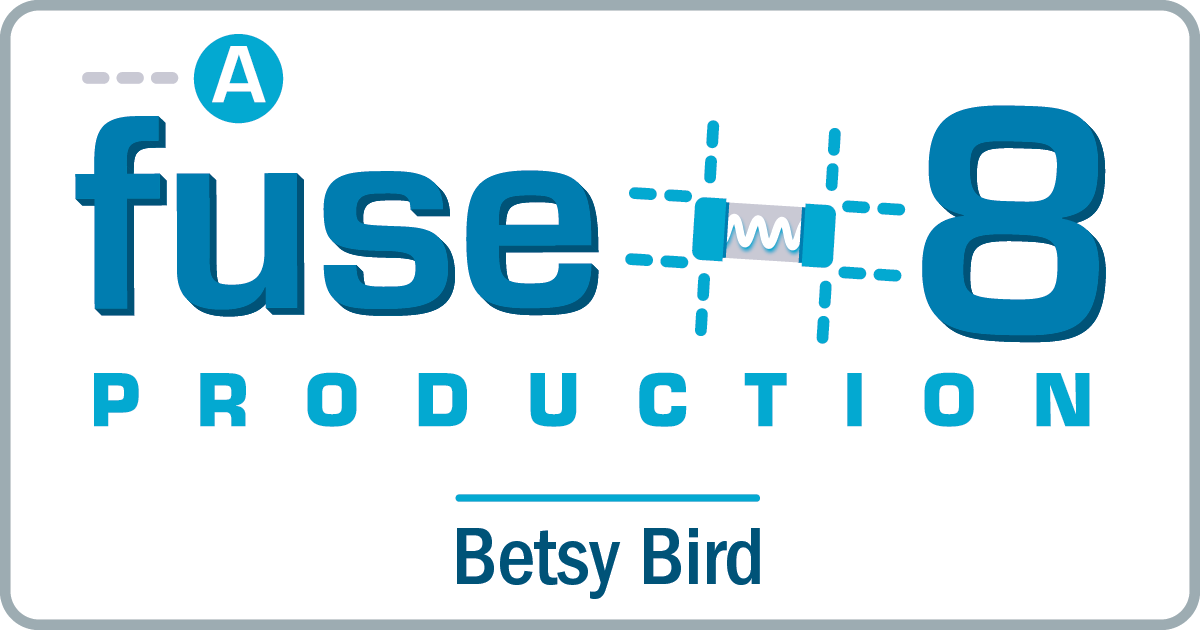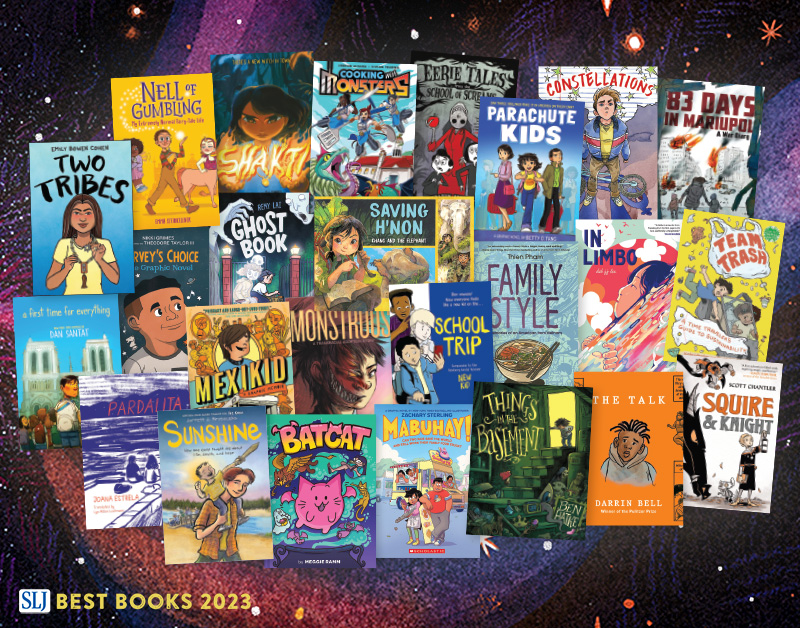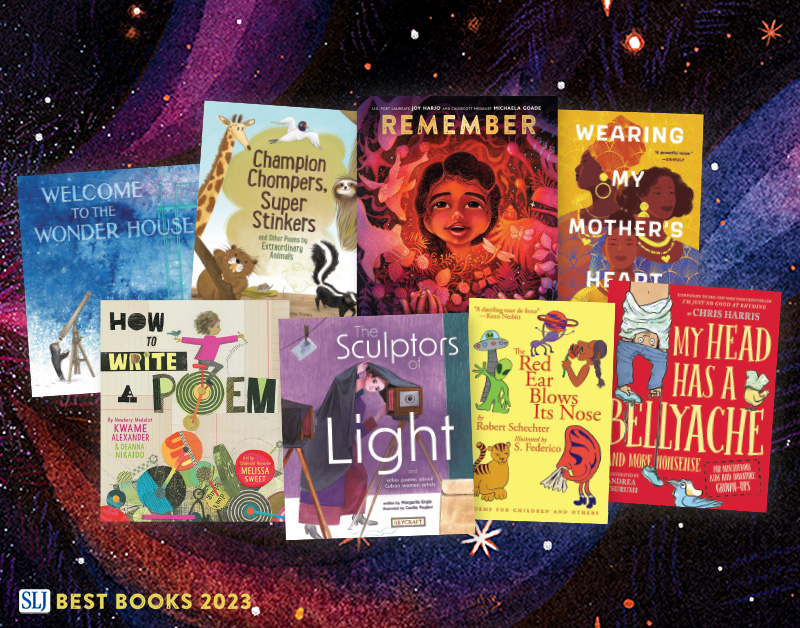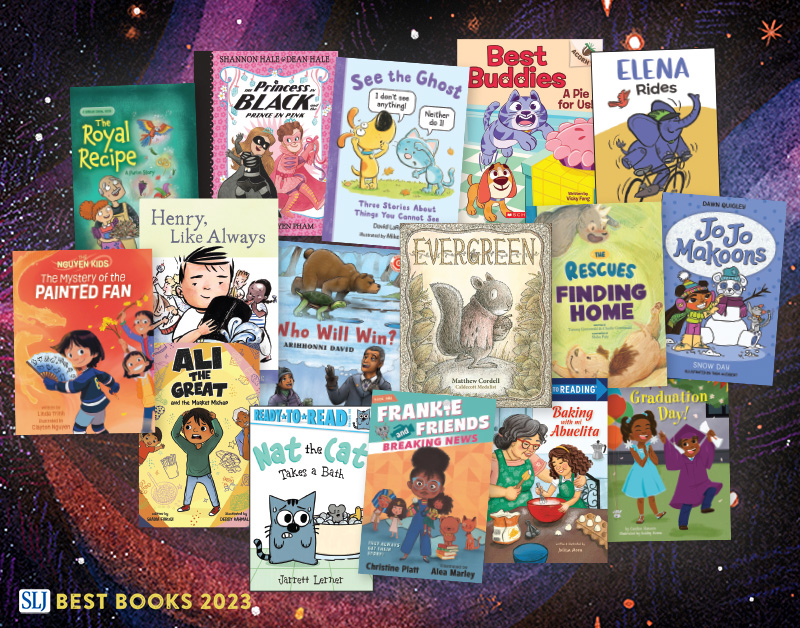Review of the Day – King George: What Was His Problem? by Steve Sheinkin
 King George: What Was His Problem? Everything your schoolbooks didn’t tell you about The American Revolution
King George: What Was His Problem? Everything your schoolbooks didn’t tell you about The American Revolution
By Steve Sheinkin
Illustrated by Tim Robinson
Flash Point (a Roaring Book Press imprint)
$19.95
ISBN: 978-1-59643-319-9
Ages 10 and up
On shelves now
Children are taught history. They turn into teenagers and find out that much of what they learned was prettified or their textbooks left out huge chunks of morally ambiguous grey matter. They go to college (some of them) and view with extreme skepticism any history, knowing as they do now that every historical text was written by someone with an agenda. And then sometimes, once in a great while, they return to the historical moments they learned about in their youth and try to figure out, really figure out, what happened all those centuries ago. In this case, author Steve Sheinkin’s journey took a slightly different route. He was a writer of historical textbooks and to his chagrin he watched as the most interesting aspects of his recaps and historical pieces were thrown on the cutting room floor (so to speak) while the dull, rote, standard “facts” got left in. The solution? Write his own hilarious encapsulation of the American Revolution with every loony detail and fascinating fact intact and present. And if he happened to make the entire war more interesting and understandable in the process, so be it. Paired with illustrator Tim Robinson, Sheinkin isn’t adverse to a little skimming himself, but for the most part this is probably the most interesting book on the revolution for kids you’re going to find this side of Jean Fritz.
ADVERTISEMENT
ADVERTISEMENT
We all know about the American Revolution, right? There was this tea party and… uh.. Paul Revere rode around on a horse. And there was this crazy king who ruled us and “don’t fire before you see the whites of their eyes” and… yeah. That stuff. A little foggy on the details? Well in King George: What Was His Problem? author Steve Sheinkin brings the 18th century into focus like no one else. With section headings like “Revere and That Other Guy” and “How to Start a Revolution”, kids will learn just as much about George Washington’s atrocious love poetry as they will the details of “General Burgoyne’s Pretty Good Plan”. The term “history comes alive” is trite, but if it weren’t I’d definitely employ it when describing this book. Illustrations by Tim Robinson complement the action and back matter includes a “Whatever Happened To…?” section that talks about the rest of the major players’ lives, heavily researched and beautifully presented Source Notes, and Quotation Notes.
What’s nice about this title is that unlike a textbook it doesn’t indulge in the notion that history is a series of unambiguous facts. History is a slippery eel here, and different accounts often receive equal attention. And be aware that even though Sheinkin likes to pepper his book with the mildly ridiculous, he never descends into rumor or hearsay. So basically if you’re looking for some corroboration to that rumor you heard that George Washington had a particularly large tuchis, seek thee elsewhere. And just look at all the stuff that adults like myself never learned in school! Elements like the fact that British official John Malcolm ripped the tar and feathers (and skin) off his body to send in a box to the British government. Mind you, for the sake of time and space the author has had to pare down much of the information about this time period. Mostly this works but there are some simplifications that get a touch too simple. “No taxation without representation” is explained as meaning basically “We’re not paying!” which isn’t precisely true.
In terms of the morally grey areas studiously avoided by our fifth grade history teachers, Sheinkin does pretty well. For example, there will probably be a fair amount of kids who view the terrorizing of taxman Andrew Oliver for the violent mob behavior it was. What’s so nice, though, is that Sheinkin tries to avoid telling child readers what to think. He just lays out the facts and lets them speak for themselves. Plus I like that he would stand up for the British soldiers too. “Did the soldiers deserve such hatred? Maybe not. Most were seventeen – and eighteen-year-old boys from poor families. This was the only job they could get . . .” And when it comes to first person accounts you sometimes run into sentences like “British and American witnesses tell different versions of the story. You’ll have to listen to some of the evidence and come to your own conclusions.” Heaven.
That said there is the question of the slaves and African Americans to consider here. Teaching kids about the Colonial Days in school always sort of skims over this stuff. We are taught that the American Revolution was a good thing. Yet how often are we taught that part of the reason some of the colonists rebelled was to hold onto their slaves? Remember, the British had abolished slavery in England by this point. How much longer before they attempted to do the same in America? Sheinkin to his credit makes note of the African-American and their contributions to the American cause whenever it is possible and appropriate to do so. And he does mention that the British opposed slavery and the American didn’t. Yet he never attempts to explain or solve one of the biggest mysteries connection with the slaves; Why on earth did some of them help the American cause? Seriously! If the British winning might mean a potential end to slavery why did people like Prince Estabrook, John Glover’s black and white regiment, and especially James Armistead (who remained enslaved until 1787) help the colonists? Did they not know the English were opposed? Sheinkin couldn’t hope to cover every aspect of the war, but if he’s writing a book that discusses the things we’re never taught in school, I’d think that this would be the number one mystery to confront head on (or at least touch on at more length than is found here). A brief “the story of our country is not a fairy tale” is better than most books, but I still wish for more.
Illustrator Tim Robinson has done a fine job providing pictures of the major players and important maps from the time period. The major players are recognizable and pop up on the sides of pages unexpected. Robinson does, however, have this very odd habit of giving all his men long eyelashes. Benedict Arnold, for example, appears to have more in common with Flower from Bambi than as our favorite traitor. The effect of these lashes is a kind of Boy Georgeification of our Founding Fathers and their British opponents. I happen to find it kind of awesome, but there’s no denying that it’s an odd way to go about things. The design of the book itself is particularly good with the words integrated with images in fun ways. The eye moves about each page easily, but the pictures and sidebars are never so prolific as to prove distracting or overwhelming.
In the back of this book you will find a section of titles called a “Collection of quotes, memoirs, and other primary sources by Revolution participants,” that is prefaced by a section explaining why first person accounts are fabulous. This book goes beyond merely teaching kids about the American Revolution. It goes so far as to turn some of them into history buffs cold. And while I wish some aspects had been covered a little more, that’s my own agenda talking. Essentially this may be the ideal thing to hand to a kid who is required to read some kind of book about the Revolution. Who knows? They may end up enjoying history. Good stuff.
Other Blog Reviews:
Misc:
- It’s a little odd, but Mr. Sheinkin is also releasing the title “Two Miserable Presidents” about The Civil War (and very much like this) at the same time as this title. FYI.
- If you’d like to know more about this particular denizen of Brooklyn, read about ‘im here.
- And it’s Non-Fiction Monday, y’all. Go on over to Picture Book of the Day for the round-up.
Filed under: Best Books of 2008
About Betsy Bird
Betsy Bird is currently the Collection Development Manager of the Evanston Public Library system and a former Materials Specialist for New York Public Library. She has served on Newbery, written for Horn Book, and has done other lovely little things that she'd love to tell you about but that she's sure you'd find more interesting to hear of in person. Her opinions are her own and do not reflect those of EPL, SLJ, or any of the other acronyms you might be able to name. Follow her on Twitter: @fuseeight.
ADVERTISEMENT
ADVERTISEMENT
SLJ Blog Network
2024 Books from Pura Belpré Winners
Winnie-The-Pooh | Review
Parsing Religion in Public Schools
Finding My Own Team Canteen, a cover reveal and guest post by Amalie Jahn
ADVERTISEMENT








While I’d like to agree with you about the slavery issue, it is likely that the slaves in American colonies would not be freed. The Slavery Abolition Act was not until 1833, over fifty years after the first stirrings of the American Revolution. Also, even if there was an abolition of the slave trade, the British would not have railed for abolition in the colonies. The colonies were their key source for cotton, tobacco, and in the late 1700’s, sugar. The anti-slavery supporters in the House of Lords and the House of Commons understood the difference between American slavery and European slavery. Most of European slavery could easily be transferred to servants, whereas the plantations in America depended on long hours and free work.
I’m willing to take you at your word on this. Yet even if you take all that into account it still doesn’t explain why the American slaves fought the British. That’s something that has baffled me for years. Do you know of any books that proffer theories?
Betsy, you might try “The Slave Trade: The Story of the Atlantic Slave Trade, 1440-1870,” by Hugh Thomas. Surely somewhere in its 900 pages is the answer to your question. (I’ve been meaning to read the book forever.)
It’s interesting how often similar books come out around the same time–in this case, I’m thinking of GEORGE VS. GEORGE–when they’re not about current events or anything. Why is that?
Thanks for the suggestion, Susan! I’ll search it out. And NW that’s a question I’ve been pondering for a while. This year I’m seeing more volcano books than I’ve seen in a given year before. the best example to my mind was the year where two chldren’s books came out about sentient cheese. It’s so weird it HAS to be coincidence.
I would try “Red, White, and Black” by Gary B. Nash. I haven’t read it yet, but it is on my to-read shelf and Nash is a fabulous historian. It is somewhat scholarly (not pure academia, but not like McCullough or Ellis, “popular historians”)
One reason that some slaves fought for the colonists is loyalty. Of course they wanted their freedom, but they did not grow up thinking slavery was bad. Most (about 70% at modest estimates) slaves stayed with their family. The common stories of slaves running away and being beaten were more on the larger plantations, but overall pretty rare. Most slave-owners had 10-20 slaves and they were literally part of the family. That’s one huge reason why.
I came across a book dealing exactly with slaves and the revolution. It is ROUGH CROSSINGS by Simon Schama and it tells the story of slaves fighting for the British, and a few for the Patriots.
And as it happens, the new Laurie Halse Anderson novel “Chains” illustrates this point beautifully too.